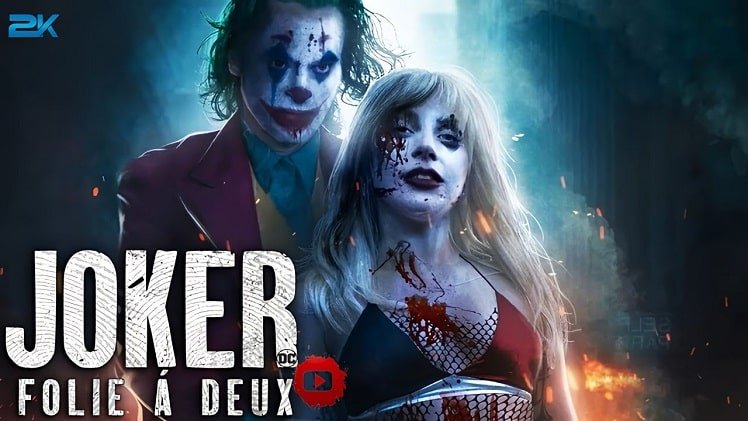Joker 2 (2014): An Exploration of Madness and Society

“Joker 2” (2014) is a gripping psychological thriller that delves into the dark psyche of Arthur Fleck, a failed comedian turned criminal mastermind. Set against the backdrop of a decaying Gotham City, the film presents a grim portrayal of mental illness, isolation, and societal decay. Directed by Todd Phillips, and featuring a transformative performance by Joaquin Phoenix, Joker has become a modern cinematic landmark, challenging traditional superhero and villain narratives.
Table: Key Characters in Joker 2 (2014)
| Character | Actor | Role in the Film |
|---|---|---|
| Arthur Fleck / Joker | Joaquin Phoenix | Protagonist; a mentally unstable man who becomes the Joker |
| Murray Franklin | Robert De Niro | A late-night talk show host who ridicules Arthur |
| Penny Fleck | Frances Conroy | Arthur’s mother, whose secrets play a key role in his unraveling |
| Sophie Dumond | Zazie Beetz | Arthur’s neighbor and imagined love interest |
| Thomas Wayne | Brett Cullen | Wealthy businessman and political figure in Gotham |
| Randall | Glenn Fleshler | Arthur’s co-worker who contributes to his mental breakdown |
Plot Overview
Arthur Fleck (Joaquin Phoenix) is a marginalized and mentally unstable man living in the gritty underbelly of Gotham City. Struggling with a condition that causes uncontrollable laughter and haunted by traumatic childhood experiences, Arthur finds solace in the thought of becoming a successful stand-up comedian. However, his hopes are crushed by a society that ridicules and rejects him. Over time, Arthur’s fragile mental state deteriorates, and he slowly transforms into the infamous Joker, inciting chaos and rebellion across the city.
Arthur Fleck: The Making of the Joker
The 2014 film presents Arthur as a deeply tragic figure, a man isolated from society and pushed to the edge. His journey to becoming the Joker is not a simple villain origin story; it’s a slow, deliberate descent into madness, shaped by years of neglect, abuse, and mental health struggles. His uncontrollable laughter, a symptom of a neurological disorder, becomes a metaphor for how society views and misunderstands mental illness. By humanizing Arthur, Joker forces viewers to consider the consequences of societal indifference and the failure of the system.
Gotham City: A Reflection of Modern Society
The Gotham of Joker (2014) is more than just a backdrop—it’s a character in itself. The city is portrayed as a crumbling, oppressive environment where the gap between the rich and poor is ever-widening. Corruption, neglect, and despair are rampant. Through Arthur’s experiences, the film draws parallels to contemporary issues like wealth inequality, mental health neglect, and the breakdown of social services. Gotham becomes the perfect breeding ground for the Joker’s rise, symbolizing the decay of modern society.
Themes of Mental Illness and Social Alienation
Central to Joker is its exploration of mental illness and how it is misunderstood and stigmatized. Arthur is a man crying out for help, but the system repeatedly fails him, from his disinterested therapist to the funding cuts for his medication. His transformation into the Joker is driven not just by personal trauma but also by a world that ignores him. The film poses difficult questions about how society treats its most vulnerable members, and whether its indifference can lead to violence and chaos.
Joaquin Phoenix’s Performance: A Tour de Force
Joaquin Phoenix’s portrayal of Arthur Fleck is widely regarded as one of the most haunting and nuanced performances in recent cinema. Phoenix underwent a physical transformation for the role, losing significant weight to reflect Arthur’s frailty. His portrayal is a masterclass in physical and emotional acting, from his jittery movements to the tortured expressions of a man on the brink of collapse. Phoenix’s Joker is not a cartoonish villain but a deeply damaged man, and it’s this complexity that makes the performance so compelling.
Controversy and Cultural Impact
Upon its release, Joker 2 sparked intense debates about its portrayal of violence, mental illness, and societal unrest. Critics questioned whether the film could be seen as sympathetic to a violent figure, or even as a dangerous glorification of a criminal mindset. However, others argued that Joker was a necessary reflection on how society marginalizes and alienates those who need help the most. The movie has since become a cultural phenomenon, cementing its place in film history as a work that challenges viewers to confront uncomfortable truths.
Cinematic Style: Visual Storytelling at Its Finest
Todd Phillips’ direction and the film’s cinematography play an integral role in Joker‘s narrative. The film’s color palette, lighting, and use of urban decay create an oppressive atmosphere that mirrors Arthur’s inner turmoil. The close-up shots of Phoenix’s face, the chaotic cityscape, and the haunting score by Hildur Guðnadóttir all work in harmony to craft an immersive and disturbing experience.
Legacy and Awards
Joker 2 received critical acclaim and won numerous awards, with Joaquin Phoenix earning the Academy Award for Best Actor. The film was celebrated not only for its performances but also for its bold storytelling, shedding light on mental health and social issues often overlooked in mainstream cinema. It has had a lasting impact on both pop culture and the superhero genre, proving that even comic book-inspired films can push the boundaries of art and commentary.




